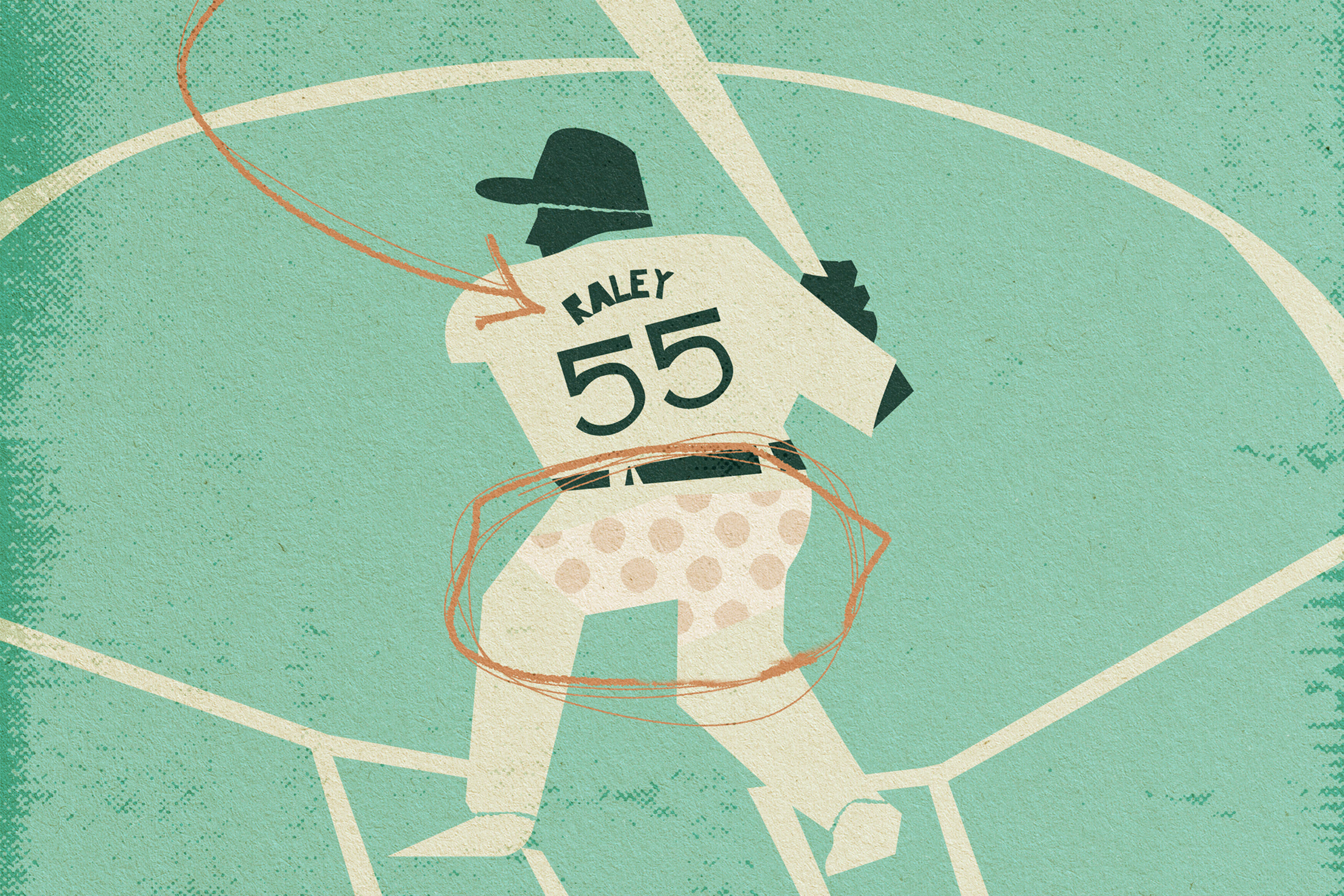The World’s Most Cutting-Edge Baseball Laboratory Is Hiding in a Kent Warehouse

Image: courtesy Driveline Baseball
After spending a single offseason training in a nondescript Kent industrial park, Mariners shortstop J.P. Crawford evolved. He went from a frustrating, inconsistent offensive player, to one of the best hitters at his position in the entire league last season. It was the stuff of modern baseball mythology. After just one hour hitting with Driveline Baseball founder Kyle Boddy at his facility, my left side seized up so tight I had to work the rest of the day with a heating pad pressed to my torso.
To a certain kind of fan, Driveline Baseball is synonymous with high-tech performance analysis, biomechanics, and the cutting edge of player development. But even if you aren’t that kind of fan, you’re still watching a sport that has been transformed on the field and off by the research and coaching happening there.
As the first type of fan, I spent years reading reports in national media about players taking offseason trips to Kent and emerging as better versions of themselves—even superstars like Shohei Ohtani and Clayton Kershaw. The existence of a place like Driveline didn’t surprise me. There have always been people pushing the limits of baseball performance. And with teams regularly shelling hundreds of millions in payroll, the incentive is obvious. What surprised me was that it existed here—a place where real estate is expensive, and the winter weather makes outdoor baseball unplayable.

Image: courtesy Driveline Baseball
So how did it come to be that the future of America’s pastime was written, at least partially, in Kent? Well, it starts with Boddy, 40, a former professional gambler, high school baseball coach, and Microsoft systems analyst, who moved to Seattle at 22 for a woman he met on the internet. (They are married now, and work together at Driveline.) His basic insight was this: baseball players are not being trained very well. By looking at research, rather than tradition, he thought he could get pitchers throwing harder and more effectively.
“I didn’t know I was right,” he says. “But I knew that the way it was done was wrong. That’s what caused me to turn into a psychopath, like how I work so much now, because I still see the opportunity today. It’s 15 years later and we’ve barely made a dent in it.”
The company grew slowly from a side project—at one point, Boddy trained players in a converted chicken coop on Lake City Way—into a full-time business with dozens of employees and a secondary facility in Arizona. It may not be a traditional baseball town, but Boddy credits the friend group he made in Seattle with helping him believe it could work. When he moved here, he says, he was very introverted, and had something of a chip on his shoulder. Like the world owed him something. He was also, he says, lazy.
“I was able to meet people out here pretty quickly and develop a whole new group. And I was lucky that the people I met were high achievers and had a lot of ambitions. And that was not me—it didn’t used to be. So I think just being around those people caused me to be that way.”
In the way he thinks, talks, and runs his business now, Boddy has more in common with a tech founder than a baseball lifer. He can be brash. Over the years, he’s pissed off a lot of people in the baseball industry—which is notoriously insular and resistant to change. He’s also worked with a lot of people in the baseball industry, including a stint in the Reds front office and a current position with the Red Sox as a special advisor.
The Driveline facility looks kind of like the inside of Boddy’s brain if it were a physical space. You walk through the lobby into a cavernous, unfinished room filled with bullpens and batting cages, squat racks and high-tech cameras, wires running everywhere, servers buzzing, screens flashing, and the sound of baseballs popping into catchers’ mitts. At first, it looks like chaos. Everything happening all at once. There’s a fenced off fulfillment area for equipment and merchandise orders, and another room that could be the office of any bootstrap startup.
But the secret sauce of Driveline, I learned, isn’t just having high-tech equipment or smart people who know how to use it. Motion capture technology allows coaches to analyze swing and pitching mechanics; sensors allow them to track the path of a bat or the specific spin rate of a curveball. The real magic is taking all that data and turning it into helpful advice that resonates with a player. Then using subsequent data to prove to them that the recommended changes are actually effective.

Image: courtesy Driveline Baseball
To demonstrate, Boddy took me into a batting cage at Driveline. He placed a little plastic cap on the bottom of a bat (this is called a Blast Motion Bat Sensor, and you can buy it from their online store), set up an iPad beside where I was standing in the cage, and we got to work hitting both real baseballs and proprietary foam ones called Smash Factor balls (also for sale from their online store). It should be noted that I’m 37 years old, two decades removed from being a so-so high school baseball player. When the weather is good, I play slow pitch softball on Thursday nights. This did not exactly make me a perfect Driveline student.
But it was fun. With each swing, I could see how far my hits traveled in a simulated version of T-Mobile Park. I could monitor the speed of my hands and bat, the exit velocity of the ball after contact, the launch angle of the ball off the bat. That itself was really cool. It felt like I was in an arcade for grown-ups. But what made the coaching work was not just the data by itself. It was the way Boddy suggested mechanical adjustments based on the outputs I was generating, and how I was able to see my numbers change after implementing those changes.
“The real essence of coaching is the human talking to the other human, getting them to believe in the programming,” he says. At the end of the session, Driveline sent a PDF my way showing my numbers and offering a fairly brutal assessment of my abilities. (Turns out I hit like a high school player.)
“Athlete does not possess sufficient bat speed (58.7 mph) in comparison to other in gym pro hitters.”
“Athlete does a poor job transferring hand speed into bat speed and efficiency (3.1) is low in comparison to other in gym pro hitters.”
“Athlete lacks sufficient average exit velocity (76.0 mph).”
And yet in my softball game the next week, I tried to think about what Boddy had told me: in my case, keeping my arms more connected to my body, and adjusting to pitch location with my torso instead of my hands. And for the first—and only— time in my life, I hit two home runs in a game. Make of that what you will. Mariners fans will be more interested in the fact that first baseman Ty France trained there in the offseason.
On the surface, France’s numbers in 2024 don’t look great so far. But whereas in 2023, he too would have been told he “lacks sufficient average exit velocity,” this year he’s been one of the best at it in baseball. If you trust the data you might believe that soon, the results will follow.




